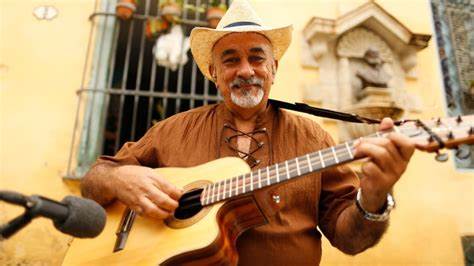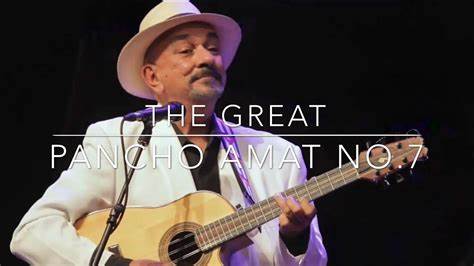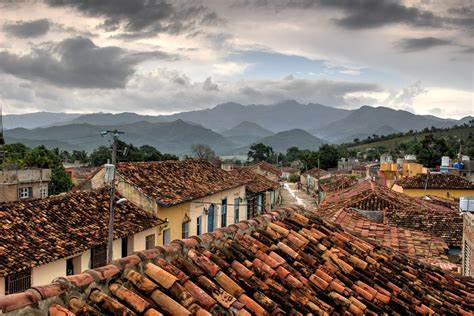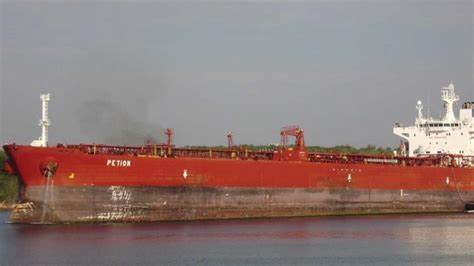
LA HABANA LINDA, CON UNA SUPERFICIE LLANA Y SUS DISPERSAS “LOMAS”. PHOTOS.
La Habana es predominantemente llana pero tiene sus lomas y son más de diez y están dispersas por toda la ciudad, lo que pasa es que muchas de ellas las subes tan concentrado en tu actividad que no notas siquiera que están allí, con excepción de unas pocas.
Vamos a referirnos a algunas de estas “elevaciones” en la superficie de nuestra siempre recordada Habana.
LA LOMA DEL BURRO…
Una de las lomas más famosas es la loma del Burro. Con 55,6 metros de altura está en la frontera entre los barrios de Luyanó y Lawton, no muy lejos de la Iglesia de Jesús del Monte y en diferentes épocas ha contado con algunos árboles, sobre todo pinos y ahora es una loma pelada. Pelada de vegetación, porque está repleta de restos de brujerías, desde un gallo hasta un racimo de plátanos podridos con un lazo colorado.
Parece que el nombre viene de algún burro que pastaba allí, pero lo verdaderamente triste de este lugar, muy cercano al conocido Hospital Materno antiguo Hijos de Galicia, es que en sus faldas estaba el aciago barrio de las Yaguas, donde muchos decían que era un refugio de prostitutas, mariguaneros, ladrones, brujeros y borrachos, cuando en realidad la mayoría de los que allí subsistían eran personas decentes que fueron desalojados de sus viviendas por no poder pagar el alquiler.
Su nombre viene de las yaguas de palmas que después de ser empleadas en la industria del tabaco, las fábricas botaban en la Loma del Burro, y con ellas se construyeron unas mil quinientas casetas donde vivían unas seis mil familias sin electricidad ni agua corriente y por supuesto sin ninguna medida sanitaria, una verdadera vergüenza de los gobiernos republicanos.
LA LOMA DE CHAPLE O DE LUZ
Es una de las de mayor elevación, está en el barrio de Santos Suárez y es una de las más significativas de la ciudad, con 66,7 metros de altura. Su nombre viene de Joaquín de la Luz, pero es más conocida por el de su urbanizador, Eduardo Chaple.
Este lugar es un mirador natural de la capital y está lleno de grandes mansiones venidas a menos y que en su momento fueron cuna de la alta burguesía y hoy estructuras que se despedazan por días, pero que siguen contando con la vista panorámica más impresionante de La Habana que van desde el Monumento a José Martí, la Rampa con el Hotel Habana Libre hasta el Capitolio y el Morro a la entrada de la Bahía.
Probablemente cuando haya un cambio de sistema, se derrumbará lo que no se haya derrumbado entonces y se harán otras construcciones, seguramente unos impresionantes restaurantes con terrazas para admirar la vista.
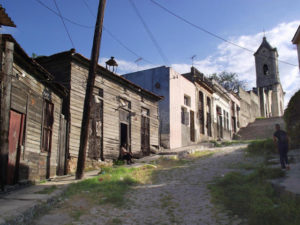
LOMA DE JESUS DEL MONTE
Con solo 39.8 metros de altura, la Loma de Jesús del Monto, protegida por un alto paredón hacia la avenida de Diez de Octubre, cuenta en su cima con la iglesia de igual nombre y la más antigua de La Habana fuera de las desaparecidas murallas. Este lugar fue una elevación de carácter estratégico en el período en que La Habana fue conquistada por los ingleses y también es histórica porque allí se produjo la sublevación de los vegueros ante el estanco del tabaco.
Al comienzo de su expansión en ella se instalaron familias adineradas; ahora es un lugar sumamente miserable y olvidado.
LA LOMA DEL MAZO
Situada en la Víbora, cercana al Instituto de Segunda Enseñanza, en Juan Bruno Zayas y Patrocinio hasta Vista Alegre y con una altura de 76.6 metros es el uno de los lugares más elevados de La Habana y también jugó un papel importante en la toma de La Habana por los ingleses y es no menos destacada e impresionante la vista desde ese lugar.
LA LOMA DE ATARÉS
Teniendo en cuenta su altitud y su ubicación, fue levantada en ella en el siglo XVIII el Castillo de San Domingo de Atarés como una de las fortificaciones del sistema defensivo de La Habana colonial.
Desde que fue edificada, el castillo ha sido utilizado como fortaleza militar, sede de la guardia presidencial, prisión y unidad militar. Es de las pocas fortalezas españolas de La Habana, al igual que el Castillo del Príncipe que en la actualidad no se encuentra abierta al público y no ha sido convertida en museo, en particular porque su estado de conservación no es bueno.
El acceso al lugar es por una falda inclinada y preparada por los constructores para que fuese muy difícil o casi imposible de escalar por quien quisiera asediarla por tierra o por mar. Las naves podían acercarse al sitio por la ensenada de Atarés, pero no al castillo.
La Oficina del Historiador de la Ciudad de La Habana (Eusebio Leal) inició el proceso de restauración del Castillo de Atarés. Esta es una obra de gran valor patrimonial que a pesar de estar declarado Monumento Nacional ha estado en estado deplorable por mucho tiempo. A su vez esta decisión está reforzada por los resultados de excavaciones arqueológicas que refuerzan su importancia y la calificación del castillo como otro de sus miradores naturales.
LOMA DE MONSERRATE
Estas loma, de la cual casi no nos damos cuenta que existe por lo pobre de su inclinación, aunque el que va manejando en Cuba para ahorrar gasolina recurre al hecho de apagar el motor y desde Cerro y Boyeros, si no se encuentra con un obstáculo o semáforo, puede ir bajando por gravedad hasta Carlos III, la loma del Príncipe y la de la Universidad.
En este lugar, antes de ser construida la Plaza Cívica, ahora llamada Plaza de la Revolución fue construida la ermita de la virgen de Monserrate, nombrada por el pueblo como la ermita de los Catalanes.

LOMA DE AROSTÉGUI
Casi no se le conoce por este nombre sino por la loma de la Universidad de La Habana. Y se conoce popularmente por la colina Universitaria con su famosa escalinata por el lado de Sán Lázaro o entrada principal y un corto pero empinado acceso por Carlos III y el comienzo de la Calle G en el Vedado.
LA LOMA DEL ANGEL (O CECILIA VALDÉS)
Sin duda una pequeñísima loma tiene una tremenda presencia en la cultura del cubano. Y todo se debe a la novela Cecilia Valdés o La Loma del Ángel (1882) del cubano Cirilo Villaverde, una de las novelas cumbres de la literatura hispanoamericana del siglo XIX.
Esta obra refleja a la sociedad cubana colonial y el mestizaje como rasgo distintivo de la nación cubana, a través de la historia amorosa entre una bella mulata y el hijo de un hacendado español y el talento narrativo de Cirilo Villaverde nos ofrece un impresionante fresco de la Cuba colonial tras el período independentista del resto de los países hispanoamericanos y la permanencia de la colonización española y la esclavitud en nuestro país.
Es muy difícil encontrar un cubano que no reconozca la importancia de la novela Cecilia Valdés para la cultura nacional. Pero muchos no conocen que Cirilo Villaverde vivió la mayor parte de su vida adulta (de 1849 a 1858 primero y luego de 1860 hasta su muerte en 1894) en Estados Unidos y que su obra cumbre fue publicada en Nueva York, ciudad en la que vivió casi cuarenta años tras.participar en el movimiento conspirativo encabezado por el general venezolano Narciso López, ser condenado a diez años de prisión y después a muerte, y lograr escapar de prisión y huir a Estados Unidos.
Justo en la esquina de Cuarteles y Avenida de Bélgica se encuentra la Iglesia del Santo Ángel Custodio, escenario principal de la historia de Cecilia Valdés de Cirilo Villaverde.
Y no lo cojan a relajo diciendo la famosa frase: (ya lo dijo Villaverde al salir del hospital, cuando el mal es de cagar, no valen guayabas verdes
LA LOMA DEL CASTILLO DEL PRINCIPE
Es la más alta colina de la capital, y fue nombrada en honor del príncipe Carlos, hijo del rey Carlos III, y en ella está ubicado el castillo del Príncipe, fortaleza militar que sirvió de prisión durante la época colonial y la era republicana. Este castillo se constituyó en el más importante de La Habana y continuó siendo una prisión hasta la década de 1970. Luego el gobierno lo transforma en una unidad de ceremonias militares y en sus faldas se podían ver a los integrantes de bandas militares ensayando y también lo conocí como un almacén de publicaciones del Instituto del Libro y que cumplía simultáneamente ambas funciones.
Por supuesto hay otras elevaciones en La Habana, pero sin llegar a alcanzar trascendencia como estas, pero podemos referirnos a la Loma del Ingenito, al sur de Lawton y al este de Víbora Park, la pálida loma del Zoológico de 26 en Nuevo Vedado por 26 y algunas otras un poco más pronunciadas que hay en esa zona, y saliendo de la zona central de la capital están la loma de la entrada principal de la playa de Guanabo, las de las entradas a las playas de Tarará y Santa María del Mar, las alturas un poco más impresionantes por estar junto a la bahía, las de Casablanca, el Cristo de La Habana y la fortaleza de la Cabaña, y la de la entrada a Cojímar.

* RECOMIENDENOS A SUS AMISTADES * PREFIERA A NUESTROS SPONSORS *

BEAUTIFUL HAVANA, WITH A FLAT SURFACE AND ITS SCATTERED “HILLS”. PHOTOS

Havana is predominantly flat but it has its hills and there are more than ten of them and they are scattered throughout the city, what happens is that many of them you climb so focused on your activity that you don’t even notice that they are there, with the exception of a few.
We are going to refer to some of these “elevations” on the surface of our always-remembered Havana.
THE HILL OF THE DONKEY…
One of the most famous hills is the Loma del Burro. At 55.6 meters high, it is on the border between the neighborhoods of Luyanó and Lawton, not far from the Church of Jesús del Monte at different times it has had some trees, especially pines, and now it is a bare hill. Stripped of vegetation, because it is full of traces of witchcraft, from a rooster to a bunch of rotten bananas with a red bow.
It seems that the name comes from some donkey that grazed there, but the truly sad thing about this place, very close to the well-known former Children of Galicia Maternity Hospital, is that on its slopes was the fateful neighborhood of Las Yaguas, where many said it was a refuge for prostitutes, marijuana users, thieves, witch doctors and drunkards, when in reality the majority of those who lived there were decent people who were evicted from their homes for not being able to pay the rent.
Its name comes from the yaguas of palms that after being used in the tobacco industry, the factories dumped in the Loma del Burro, and with them, some 1,500 huts were built where some 6,000 families lived without electricity or running water and therefore course without any sanitary measures, a true shame of the republican governments.
THE HILL OF CHAPLE OR LIGHT
It is one of the highest, it is in the Santos Suárez neighborhood and is one of the most significant in the city, at 66.7 meters high. Its name comes from Joaquín de la Luz, but it is better known by that its developer, Eduardo Chaple.
This place is a natural viewpoint of the capital and is full of large mansions that have fallen into disrepair and that at the time were the cradle of the upper bourgeoisie today structures that fall apart for days, but still have the most impressive panoramic view of La Havana that go from the Monument to José Martí, the Ramp with the Habana Libre Hotel to the Capitol and the Morro at the entrance of the Bay.
Probably when there is a change in the system, what has not collapsed then will collapse and other constructions will be built, surely some impressive restaurants with terraces to admire the view.
HILL OF JESUS OF THE MONTE
Only 39.8 meters high, the Loma de Jesús del Monto, protected by a high wall towards Diez de Octubre avenue, has at its top the church of the same name and the oldest in Havana outside the disappeared walls. This place was a strategic elevation in the period in which Havana was conquered by the English and it is also historical because the uprising of the vegueros took place there against the tobacconist.
At the beginning of its expansion, wealthy families settled in it; now it is an extremely miserable and forgotten place.
THE HILL OF THE MAZO
Located in La Víbora, near the Secondary Education Institute, on Juan Bruno Zayas and Patrocinio to Vista Alegre and with a height of 76.6 meters, it is one of the highest places in Havana and also played an important role in the taking of La Havana by the English and the view from that place is no less outstanding and impressive.

THE HILL OF ATARÉS
Taking into account its altitude and location, the Castillo de San Domingo de Atarés was built there in the 18th century as one of the fortifications of the defensive system of colonial Havana.
Since it was built, the castle has been used as a military fortress, headquarters of the presidential guard, prison and military unit. It is one of the few Spanish fortresses in Havana, like the Castillo del Príncipe, which is currently not open to the public and has not been converted into a museum, particularly because its state of conservation is not good.
The access to the place is by a steep slope and prepared by the builders so that it would be very difficult or almost impossible to climb by whoever wanted to besiege it by land or by sea. Ships could approach the site through the Atarés cove, but not the castle.
The Office of the Historian of the City of Havana (Eusebio Leal) began the process of restoring the Castle of Atarés. This is a work of great heritage value that, despite being declared a National Monument, has been in a deplorable state for a long time. In turn, this decision is reinforced by the results of archaeological excavations that reinforce its importance and the classification of the castle as another of its natural viewpoints.
HILL OF MONSERRATE
These hills, of which we almost do not realize that it exists due to their poor inclination, although those who drive in Cuba to save gasoline resort to turning off the engine and from Cerro and Boyeros if they do not come across an obstacle or traffic light, you can go down by gravity to Carlos III, the hill of the Prince and the University.
In this place, before the Civic Square was built, now called Revolution Square, the hermitage of the Virgin of Monserrate was built, named by the town as the hermitage of the Catalans.
HILL OF AROSTEGUI
It is hardly known by this name but by the hill of the University of Havana. And it is popularly known for the Universitaria hill with its famous staircase on the side of San Lázaro or main entrance and a short but steep access through Carlos III and the beginning of Calle G in Vedado.
THE LOMA DEL ANGEL (OR CECILIA VALDÉS)
Without a doubt, a very small hill has a tremendous presence in Cuban culture. And it is all due to the novel Cecilia Valdés or La Loma del Ángel (1882) by the Cuban Cirilo Villaverde, one of the pinnacle novels of 19th-century Latin American literature.
This work reflects colonial Cuban society and miscegenation as a distinctive feature of the Cuban nation, through the love story between a beautiful mulatto woman and the son of a Spanish landowner and the narrative talent of Cirilo Villaverde offers us an impressive fresco of Colonial Cuba after the independence period of the rest of the Latin American countries and the permanence of Spanish colonization and slavery in our country.
It is very difficult to find a Cuban who does not recognize the importance of the novel Cecilia Valdés for the national culture. But many do not know that Cirilo Villaverde lived most of his adult life (from 1849 to 1858 first and then from 1860 until his death in 1894) in the United States and that his masterpiece was published in New York, the city where he lived. almost forty years after participating in the conspiracy movement led by Venezuelan General Narciso López, he was sentenced to ten years in prison and later to death, and managed to escape from prison and flee to the United States.

Right on the corner of Cuarteles and Avenida de Belgica is the Iglesia del Santo Ángel Custodio, the main setting for the story of Cecilia Valdés by Cirilo Villaverde.
And don’t take it easy by saying the famous phrase: (Villaverde already said it when he left the hospital when evil is to shit, green guavas are worthless
THE HILL OF THE PRINCE’S CASTLE
It is the highest hill in the capital and was named in honor of Prince Carlos, son of King Carlos III, and it is where the castle of the Prince is located, a military fortress that served as a prison during the colonial and republican eras. This castle became the most important in Havana and continued to be a prison until the 1970s. Later, the government transformed it into a unit for military ceremonies, and members of military bands could be seen rehearsing on its skirts, as well as I met as a publication warehouse of the Book Institute and that simultaneously fulfilled both functions.
Of course, there are other elevations in Havana, but without reaching transcendence like these, but we can refer to the Loma del Ingenito, south of Lawton and east of Víbora Park, the pale hill of the 26 Zoo in Nuevo Vedado for 26 and some others a little more pronounced that are in that area, and leaving the central area of the capital are the hill of the main entrance of the Guanabo beach, those of the entrances to the beaches of Tarará and Santa María del Mar, the heights a little more impressive for being next to the bay, those of Casablanca, the Christ of Havana and the fortress of La Cabaña, and that of the entrance to Cojímar.
Agencies/ Wiki/ MemoriasCubanas/ Carlos RodriguezB. / Extractos/ Excerpts/ Internet Photos/ Arnoldo Varona/ www.TheCubanHistory.com
THE CUBAN HISTORY, HOLLYWOOD.

* RECOMIENDENOS A SUS AMISTADES * PREFIERA A NUESTROS SPONSORS *






